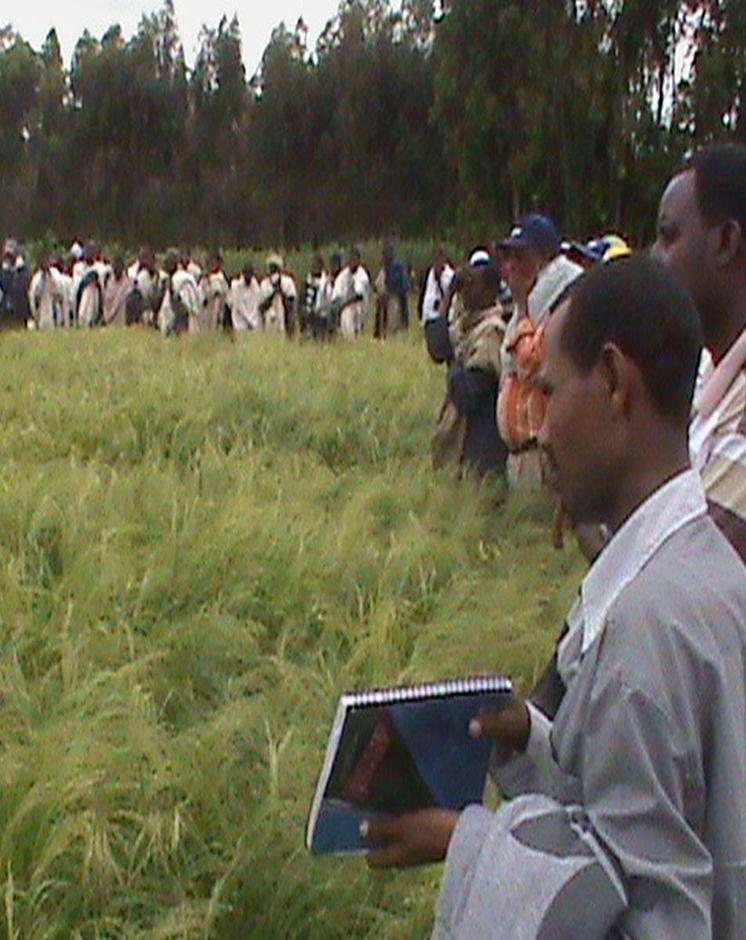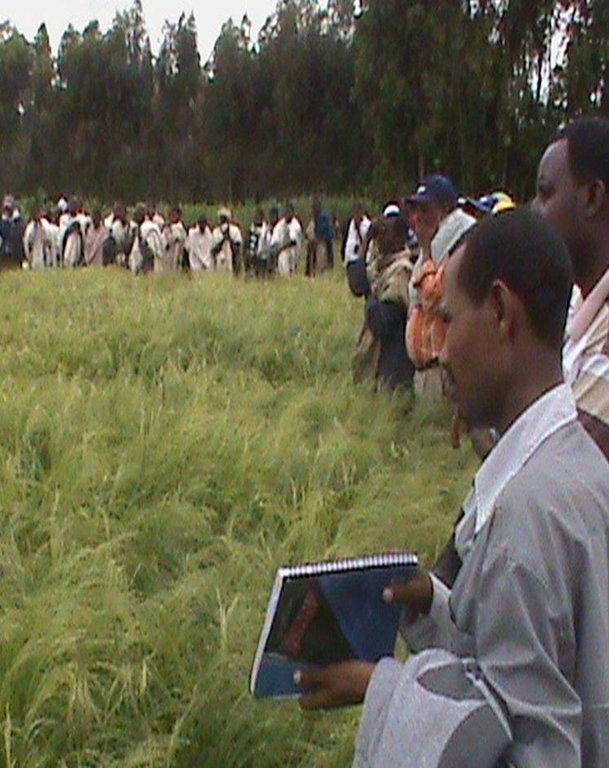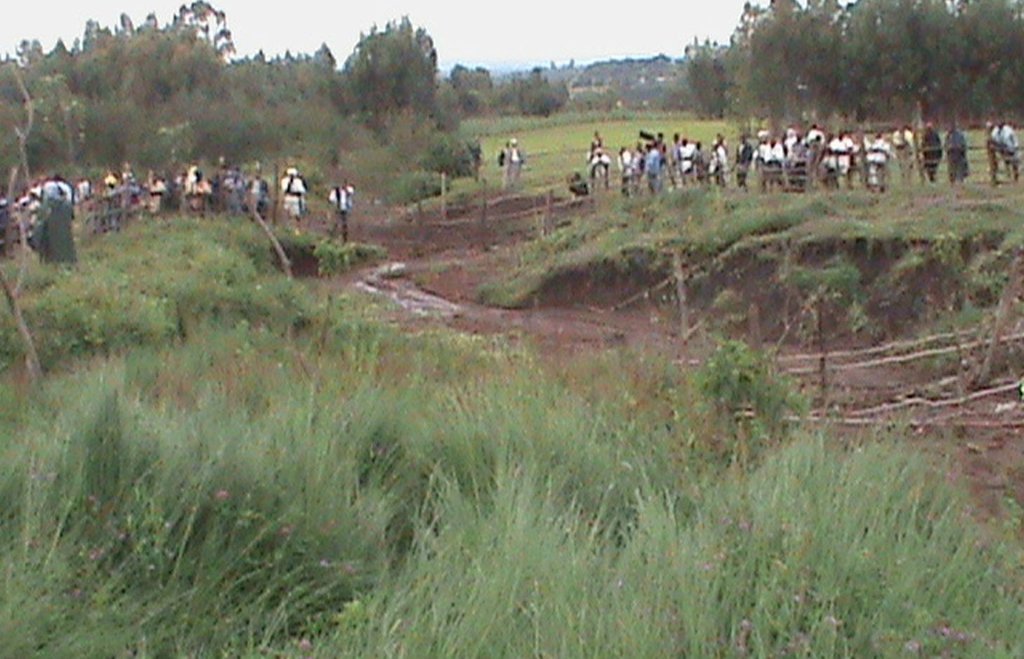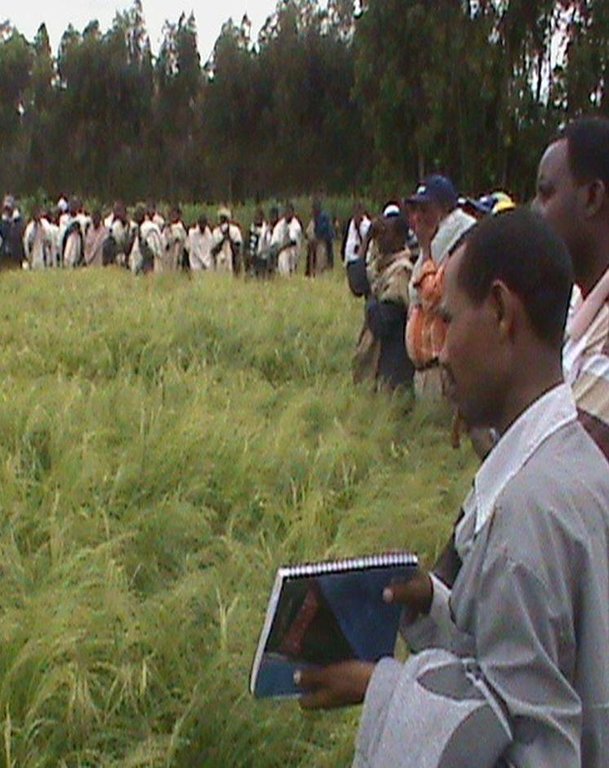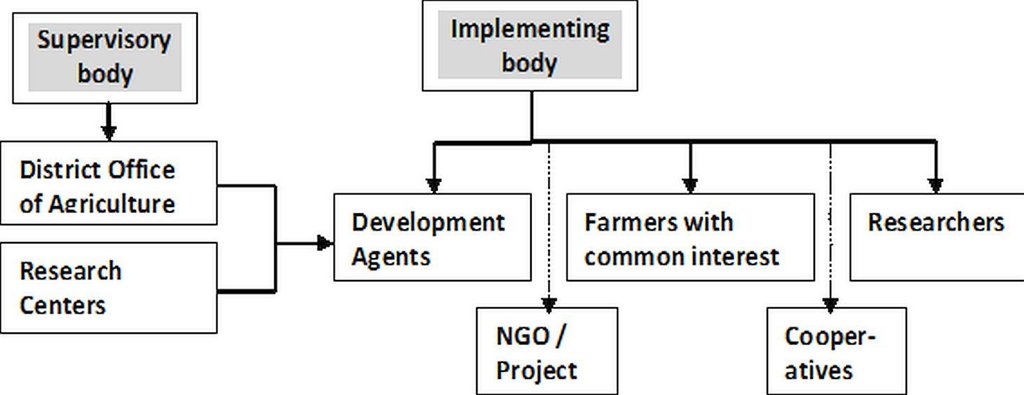Farmer-Research-Extension Group (FREG) [ອີທິໂອເປຍ]
- ການສ້າງ:
- ປັບປູງ:
- ຜູ້ສັງລວມຂໍ້ມູນ: Gizaw Desta Gessesse
- ບັນນາທິການ: –
- ຜູ້ທົບທວນຄືນ: Fabian Ottiger
Yearsoader temeramari buden (Amharic)
approaches_2496 - ອີທິໂອເປຍ
ເບິ່ງພາກສ່ວນ
ຂະຫຍາຍທັງໝົດ ຍຸບທັງໝົດ1. ຂໍ້ມູນທົ່ວໄປ
1.2 ລາຍລະອຽດ ການຕິດຕໍ່ ຂອງບຸກຄົນທີ່ຊັບພະຍາກອນ ແລະ ສະຖາບັນ ການມີສ່ວນຮ່ວມ ໃນການປະເມີນຜົນ ແລະ ເອກະສານ ຂອງວິທີທາງ
ຊື່ຂອງ ສະຖາບັນການຈັດຕັ້ງ ທີ່ອໍານວຍຄວາມສະດວກ ໃນການສ້າງເອກກະສານ ຫຼື ປະເມີນແນວທາງ (ຖ້າກ່ຽວຂ້ອງ)
Water and Land Resource Centre (WLRC) - ອີທິໂອເປຍ1.3 ເງື່ອນໄຂ ຂອງການນໍາໃຊ້ເອກກະສານຂໍ້ມູນ ຂອງ WOCAT
ເມື່ອໃດທີ່ໄດ້ສັງລວມຂໍ້ມູນ (ຢູ່ພາກສະໜາມ)?
26/05/2014
ຜູ້ສັງລວມ ແລະ ບັນດາຜູ້ຕອບແບບສອບຖາມ ຍອມຮັບໃນເງື່ອນໄຂ ການນໍາໃຊ້ຂໍ້ມູນເອກະສານ ທີ່ສ້າງຂື້ນ ໂດຍຜ່ານ ອົງການ WOCAT:
ແມ່ນ
1.4 ເອກະສານອ້າງອີງ (ຫຼາຍ) ກັບແບບສອບຖາມ (ຫຼາຍ) ເຕັກໂນໂລຢີ ຂອງດ້ານການຄຸ້ມຄອງ ດິນແບບຍືນຍົງ
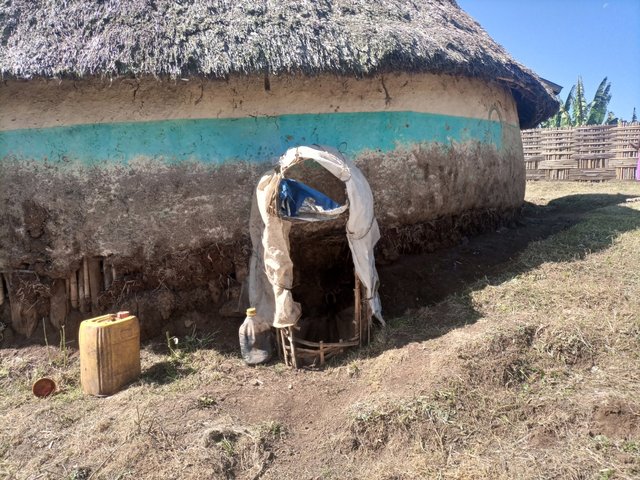
Livestock Urine Collection and Use [ອີທິໂອເປຍ]
Collection of livestock urine allows resource-poor farmers to capture nutrient-rich livestock waste and use it to substitute urea fertilizer. It is a liquid organic product that restores soil fertility and pest management.
- ຜູ້ສັງລວມຂໍ້ມູນ: GERBA LETA
2. ພັນລະນາ ແນວທາງການຄຸ້ມຄອງນໍາໃຊ້ດິນແບບຍືນຍົງ
2.1 ການອະທິບາຍ ໂດຍຫຍໍ້ ຂອງວິທີທາງ
Farmer-Research-Extension Group (FREG) is a grass root level platform aims to bridge gaps on agricultural technology transfer between research and extension linkage and provide a platform of 20-30 members from research, extension and farmer for their joint learning and active participatory role in agricultural technology evaluation and dessimination.
2.2 ການອະທິບາຍ ລາຍລະອຽດ ຂອງວິທີທາງ
ການອະທິບາຍ ລາຍລະອຽດ ຂອງວິທີທາງ:
Aims / objectives: FREG aims to facilitate the selection and transfer of agricultural technologies to end users through active participation and coordinated efforts of research-extension and farmer together. The objectives of FREG are: 1) evaluating and selecting improved agricultural technologies through participatory processes at field level, 2) demonstrating improved agricultural technologies to FREG members and other non-member land users in the villages, 3) facilitating farmer to farmer knowledge and technology exchange for faster and wider dissemination and adoption
Methods: In FREG, research takes initiation to facilitate the formation. The group is expected to identify and prioritize problems of their locality on its own and research and extension organizations could take facilitation to form or organize groups based on specific objectives. If the intention is to provide a range of technological options to fit needs and interests of farmers, it can be best developed with participation and through knowledge sharing among stakeholders (research, extension and farmer). Thus, group formation is based on individual and group interests. Those farmers who have similar interests are organized into a group based on proximity including both male and women farmers. Next, the group establish norms, share responsibility, design activity plan, and implement activities. The group meets regularly to evaluate performance of technologies at different stages. During each meeting, it is critical to visit on-farm activities of individual members and assess the relative performance. They develop their own criteria to rank and select the best technologies. Finally, they participate in field days and decide the best technologies for scale up to wider areas.
Stages of implementation: 1. Conduct awareness meeting of farmers about the available technologies for demonstration and scale up and their merits compared to the existing technologies in the hands of farmers.
2. Based on the awareness creation, collect the demands and interests of farmers in which of the technology options they want to involve. Organize into groups according to common interests.
3. Prepare and conduct training about the characteristics of available technologies, procedures of on-farm implementation and evaluation, farmer to farmer technology transfer, and work norms
4. FREG members develop their working norms, decide on the period of meetings, and develop plan of activities
5. Implement on-farm activities and evaluate the performance of planned activities on regular basis
6. Evaluate and rank the technology options based on their own criteria in order to select the best technologies
7. Organize field days to demonstrate and exchange the results of technology options to other non-member farmers and stakeholders. The technologies selected through FREG participatory evaluation procedures need to be supported with research evidences by ARARI.
8. Finally, each member farmer who is involved in on-farm technology evaluation took the responsibility to transfer the selected technology to at least 3-5 other farmers in his locality in order to facilitate quick dissemination, scaling up.
Role of stakeholders: Farmer: The farmers who have common interest on a given technology is responsible to lead the participatory technology selection
Development agents/extension: they should play facilitation and motivation role and help to encourage farmers to become member of FREG. They also follow up whether the FREG accomplish the planned activities and attend regular meetings
Research: research is involved in demonstration of technologies, in the initiation and establishment of FREG and plays a role of facilitation and technology supply. Research need to organize field days and advice other stakeholders to participate in the process
Project/WLRC: Provide material and technical support for the FREG and participate in the meetings and field days
Other stakeholders: The involved actors in the area should actively participate as a FREG member and during field days.
2.3 ຮູບພາບຂອງແນວທາງ
2.5 ປະເທດ / ເຂດ / ສະຖານທີ່ບ່ອນທີ່ແນວທາງໄດ້ຖືກນໍາໃຊ້
ປະເທດ:
ອີທິໂອເປຍ
ພາກພື້ນ / ລັດ / ແຂວງ:
Amhara National Regional State
ຂໍ້ມູນເພີ່ມເຕີມຂອງສະຖານທີ່:
Bahir Dar Zuria, Dembecha, Mecha, Yilmna Densa, Dessie Zuria, Basona Worana
2.6 ວັນທີເລີ່ມຕົ້ນ ແລະ ສິ້ນສຸດ ການຈັດຕັ້ງປະຕີບັດ ວິທີທາງ
ສະແດງປີຂອງການເລີ່ມຕົ້ນ:
2005
2.7 ປະເພດຂອງແນວທາງ
- ພາຍໃຕ້ໂຄງການ / ແຜນງານ
2.8 ເປົ້າໝາຍ / ຈຸດປະສົງຫຼັກ ຂອງການຈັດຕັ້ງປະຕິບັດ ວິທີທາງ
The Approach focused mainly on other activities than SLM (Participatory technology evaluation and selection, awareness creation, training, field visits, field days)
The main objective of FREG is to facilitate the participation and involvement of farmers, researchers and extension agents together in technology evaluation, selection and dessimination.
The SLM Approach addressed the following problems: The main problems targeted to address by implementing FREG approach are: low dissemination and adoption of agricultural and natural resource management technologies; linkage gap between research, who generate technologies, and extension who transfer and disseminate technologies; and low participation and involvement of farmers in technology development and selection processes.
2.9 ເງື່ອນໄຂອໍານວຍ ຫຼື ຂັດຂວາງການປະຕິບັດຂອງເຕັກໂນໂລຢີ / ເຕັກໂນໂລຢີການນໍາໃຊ້ຕາມແນວທາງ
ມີຄວາມສາມາດ / ເຂັ້າເຖິງຊັບພະຍາກອນດ້ານການເງິນ ແລະ ການບໍລິການ
- ເຊື່ອງຊ້ອນ
Low capacity of farmers to afford and use improved technologies
Treatment through the SLM Approach: The approach allows options of in-kind exchange, transfer and dissemination of technologies from farmer to farmer without incurring much cost to them
ການກໍ່ຕັ້ງສະຖາບັນ
- ເຊື່ອງຊ້ອນ
Inadequate linkage between research and extension that lead to low supply and transfer of technologies
Treatment through the SLM Approach: The FREG is the best link at grass root level where the demand (extension-farmer) and supply (research) can effectively interface
ກ່ຽວກັບກົດໝາຍ (ສິດນໍາໃຊ້ດິນ, ສິດນໍາໃຊ້ນໍ້າ)
- ເຊື່ອງຊ້ອນ
The existing land ownership, land use rights / water rights hindered a little the approach implementation Since FREG approach is implemented on individual farm plots, entitlement of individual land use right is essential to invest on new agricultural technologies. At same time, water use right has contributed a lot to implement technologies working under irrigated and water harvesting systems. For example, if farmers are not allowed to dig shallow wells and divert streams it was not able to demonstrate and implement home garden in all watersheds and chickpea varieties at Debre Yacob
ຄວາມຮູ້ກ່ຽວກັບການຄຸ້ມຄອງ ທີ່ດິນແບບຍືນຍົງ, ການເຂົ້າເຖິງການສະໜັບສະໜູນ ທາງດ້ານວິຊາການ
- ເຊື່ອງຊ້ອນ
Lack of information about availability of technologies and inadequate participation of farmers in technology evaluation and selection processes that partly result in low adoption of existing technologies.
Treatment through the SLM Approach: The FREG approach provides choice of technologies for farmers and extension agents and take part in the evaluation and selection of technologies that fit to the system for wider adoption
3. ການມີສ່ວນຮ່ວມ ແລະ ບົດບາດຂອງພາກສ່ວນທີ່ກ່ຽວຂ້ອງທີ່ໄດ້ມີສ່ວນຮ່ວມ
3.1 ຜູ້ມີສ່ວນຮ່ວມ ໃນວິທີທາງ ແລະ ພາລະບົດບາດ ຂອງເຂົາເຈົ້າ
- ຜູ້ນໍາໃຊ້ດິນໃນທ້ອງຖິ່ນ / ຊຸມຊົນທ້ອງຖິ່ນ
Individual land users who have common interest on specific technology
Land users are active members and take the leading responsibility of the process
- ຜູ້ຊ່ຽວຊານ ການນຄຸ້ມຄອງ ທີ່ດິນແບບຍືນຍົງ / ທີ່ປຶກສາດ້ານກະສິກໍາ
Agricultural specialists and development agents
- ນັກຄົ້ນຄວ້າ
Researchers has the role to facilitate and provide technologies
- ອໍານາດ ການປົກຄອງທ້ອງຖິ່ນ
The development agent together with kebele adminstration, District Agriculture Office Cooperative Agents for implementation and supervision
- ພະນັກງານຂັ້ນສູນກາງ (ຜູ້ວາງແຜນ, ຜູ້ສ້າງນະໂຍບາຍ)
They were involved in the monitoring and evaluation stage
ຖ້າຫາກມີຫຼາຍພາກສ່ວນທີ່ເຂົ້າຮ່ວມ ໃຫ້ລະບຸ ອົງການທີ່ເປັນຫຼັກ ໃນການຈັດຕັ້ງປະຕິບັດ:
In FREG, both men and women can be members. Women play a great role in selecting technologies specially technologies related to food processing aspects
3.2 ການມີສ່ວນຮ່ວມຂອງຜູ້ນໍາໃຊ້ທີ່ດິນໃນທ້ອງຖິ່ນ / ຊຸມຊົນທ້ອງຖິ່ນໃນໄລຍະທີ່ແຕກຕ່າງກັນຂອງແນວທາງ
| ການລວບລວມ ເອົາຜູ້ນໍາໃຊ້ດິນ ໃນທ້ອງຖິ່ນ / ຊຸມຊົນທ້ອງຖິ່ນ | ໃຫ້ລະບຸ ຜູ້ໃດທີ່ມີສ່ວນຮ່ວມ ໃນແຕ່ລະກິດຈະກໍາ? | |
|---|---|---|
| ການເລີ່ມຕົ້ນ / ແຮງຈູງໃຈ | ການບໍ່ປະຕິບັດ | Land users has no involvement in the initiation of the approach. Land users are part of the process after the planning phase. |
| ການວາງແຜນ | ການຮ່ວມມື | At planning stage of the approach, land users' are needed to express their interests and needs of technology options, and their interest to form a group. Land users participate by expressing their technology needs once information about available technology options is provided by the researchers and development agents. |
| ການປະຕິບັດ | ການຮ່ວມມື | Land users are expected beeing actively involved in every stage of the implementation and take the leading responsibility to all activities such as site selection, seed bed preparation, planting, cultivation, harvesting and reporting the productivity. |
| ຕິດຕາມກວດກາ / ການປະເມີນຜົນ | ການຮ່ວມມື | Land users are responsible to regularly evaluate the technologies and select the best for promotion and further scale up activities |
| Research | ການຮ່ວມມື | In the FREG approach, participatory technology evaluation and selection is the key element. Thus the land users are allowed to evaluate and select best and suitable ones among several options |
3.3 ແຜນວາດ (ຖ້າມີ)
ການອະທິບາຍ:
The district office of agriculture and research centers within ARARI are the supervisory bodies for the implementation of the FREG approach. The main implementer are the member farmers in the group, the researcher and development agent at kebele level. Depending on the availability and interest, NGOs/ Projects and cooperative agents are involved in the implementation of the process.
ຜູ້ຂຽນ:
Gizaw Desta (WLRC, P.O.Box 8707, Addis Abeba, Ethiopia)
3.4 ການຕັດສິນໃຈກ່ຽວກັບການຄັດເລືອກເຕັກໂນໂລຢີຂອງການຄຸ້ມຄອງທີ່ດິນແບບຍືນຍົງ / ເຕັກໂນໂລຢີ
ລະບຸ ຄົນທີ່ຕັດສິນໃຈ ກ່ຽວກັບການຄັດເລືອກຂອງ ເຕັກໂນໂລຢີ / ເຕັກໂນໂລຢີ ຈະໄດ້ຮັບການປະຕິບັດ:
- ຜູ້ນໍາໃຊ້ທີ່ດິນຫຼັກ, ການສະໜັບສະໜູນ ໂດຍຜູ້ຊ່ຽວຊານ ການນໍາໃຊ້ທີ່ດິນແບບຍືນຍົງ
ອະທິບາຍ:
Different options of adapted technologies are supplied from research and the farmers can decide and choose the type of technology for demonstration and scale up
Decisions on the method of implementing the SLM Technology were made by mainly by SLM specialists with consultation of land users. Researchers and development agents with active participation of the FREG member farmers decide on the method of implementation
4. ການສະໜັບສະໜູນທາງດ້ານວິຊາການ, ການສ້າງຄວາມສາມາດ, ແລະ ການຈັດການຄວາມຮູ້.
4.1 ການສ້າງຄວາມສາມາດ / ການຝຶກອົບຮົມ
ຜູ້ນໍາໃຊ້ທີ່ດິນ ຫຼື ພາກສ່ວນກ່ຽວຂ້ອງອື່ນໆ ໄດ້ຮັບການຝຶກອົບຮົມບໍ່?
ແມ່ນ
ໃຫ້ລະບຸ ຜູ້ໃດທີ່ໄດ້ຮັບການຝຶກອົບຮົມ:
- ຜູ້ນໍາໃຊ້ດິນ
- ພະນັກງານພາກສະໜາມ / ທີ່ປຶກສາ
- Other development agents are involved in cooperatives and other agr. development actions
ຖ້າເປັນໄປໄດ້, ໃຫ້ລະບຸເພດ, ອາຍຸ, ສະຖານະພາບ, ຊົນເຜົ່າ, ແລະ ອື່ນໆ:
It includes all land users who are members of FREG including women.
ຮູບແບບຂອງການຝຶກອົບຮົມ:
- ການເຮັດຕົວຈິງ
- ຕົວຕໍ່ຕົວ
- ເນື້ອທີ່ສວນທົດລອງ
ໃນຫົວຂໍ້:
Awareness creation and characteristics of the technology, merits of new technologies compared to locally available and adapted technologies, procedures of implementing the technology evaluation and selection, the participation and involvement of FREG members at each stage of the implementation are contents of the training for FREG members before they start implementation.
Development agents and some experts from the district as well as project/NGO offices are contributing to the trainings about the implementation procedures and monitoring and evaluation activities.
4.2 ການບໍລິການໃຫ້ຄໍາປຶກສາ
ເຮັດຜູ້ໃຊ້ທີ່ດິນມີການເຂົ້າເຖິງການບໍລິການໃຫ້ຄໍາປຶກສາ?
ແມ່ນ
ລະບຸວ່າການສະໜອງ ການບໍລິການ ໃຫ້ຄໍາປຶກສາ:
- ສູນຄົ້ນຄວ້າ
ອະທິບາຍ / ຄວາມຄິດເຫັນ:
Name of method used for advisory service: Participatory Demonstration and Training Extension System (PADETES); Key elements: Training and awareness creation of farmers in FTCs , Provision of package of technologies, demonstrations in the Farmer Training Centers (FTC) and experience sharing visits, On job training; The method gives high emphasis to training and to some extent practical demonstrations supported with experience
sharing visits but less emphasis to advisory of farmers on spot
Advisory service is quite adequate to ensure the continuation of land conservation activities; The government service at Kebele level is adequate to ensure the implementation of FREG approach through active involvement of the development agents.
4.3 ສະຖາບັນການສ້າງຄວາມເຂັ້ມແຂງ (ການພັດທະນາອົງການຈັດຕັ້ງ)
ສະຖາບັນ ໄດ້ຮັບການສ້າງຕັ້ງຂື້ນ ຫຼື ໄດ້ຮັບການສ້າງຄວາມເຂັ້ມແຂງ ໂດຍການຈັດຕັ້ງປະຕິບັດ ວິທີທາງບໍ່?
- ມີ, ພໍສົມຄວນ
ລະບຸ ທາງສະຖາບັນ ໄດ້ສ້າງຄວາມເຂັ້ມແຂງ ໃນລະດັບໃດ (ຫຼາຍ):
- ທ້ອງຖິ່ນ
ລະບຸ ປະເພດ ຂອງສະໜັບສະໜູນ:
- ການສ້າງຄວາມອາດສາມາດ / ການຝຶກອົບຮົມ
ໃຫ້ລາຍລະອຽດເພີ່ມເຕີມ:
Moderate support with awareness creation, training, and supply of some equipments. The local institutions like FREG and Farmer Training Centers (FTCs) are supported by training, and training and demonstration aid facilities
4.4 ຕິດຕາມກວດກາ ແລະ ປະເມີນຜົນ
ການຈັດຕັ້ງປະຕິບັດ ວິທີທາງ ໄດ້ມີການປະເມີນຜົນ ແລະ ຕິດຕາມບໍ?
ແມ່ນ
ຄວາມຄິດເຫັນ:
bio-physical aspects were ad hoc monitored by government, land users through observations; indicators: growth performance of varieties or breeds, occurrence of disease and pests
bio-physical aspects were regular monitored by project staff, government through measurements; indicators: amount of inputs applied and labor, production and productivity of comparative technologies by WLRC and ARARI
socio-cultural aspects were regular monitored by project staff, government through measurements; indicators: Change in attitude of technology use, collective action within the group, productivity and economic benefits, exchange of knowledge and technology, transfer and dissemination rate measured jointly by WLRC and ARARI
area treated aspects were ad hoc monitored by project staff, government, land users through observations; indicators: Type of technology, number of users per technology, area covered by the technology
area treated aspects were regular monitored by project staff, government through measurements; indicators: Type of technology and number of users per technology by WLRC
There were several changes in the Approach as a result of monitoring and evaluation: After the monitoring and evaluation, the number of users increase, high demand and request for additional technologies, improved management of the technology were observed.
There were few changes in the Technology as a result of monitoring and evaluation: It sometimes occurs where there are more superior new technologies. For example, Faba Bean varieties were changed by superior one called Wolki variety.
4.5 ການຄົ້ນຄວ້າ
ນີ້້ແມ່ນສ່ວນໜຶ່ງ ການຄົ້ນຄວ້າ ຂອງວິທີທາງບໍ່?
ແມ່ນ
ລະບຸ ຫົວຂໍ້:
- ເສດຖະສາດ / ການຕະຫຼາດ
- ເຕັກໂນໂລຢີ
ໃຫ້ຂໍ້ມູນ ເພີ່ມເຕີມ ແລະ ກໍານົດ ຜູ້ໃດເຮັດການຄົ້ນຄວ້າ:
Research play role of initiation of the approach, facilitate the processes, take part in the implementation, monitoring and evaluation, advisory services, supply of the technologies demanded by FREG members, and evaluate the costs and benefits of the demonstrated technologies. The research centers in 2.3.1.1 (i.e., five research centers within the Amhara Region Agricultural Research Institute, ARARI) are fully responsible to conduct demonstrations, pr-extension dissemination of technologies and socio-economic research activities through the FREG
Research was carried out on-farm
5. ການສະໜັບສະໜູນທາງດ້ານການເງິນ ແລະ ອຸປະກອນຈາກພາຍນອກ
5.1 ງົບປະມານປະຈໍາປີ ສໍາລັບວິທີທາງ ຂອງການຄຸ້ມຄອງ ທີ່ດິນແບບຍືນຍົງ
ຖ້າຫາກບໍ່ຮູ້ຈັດງົບປະມານທີ່ແນ່ນອນ ແມ່ນໃຫ້ປະມານເອົາ:
- 100,000-1,000,000
ຄໍາເຫັນ (ຕົວຢ່າງ: ແຫຼ່ງຂໍ້ມູນຫຼັກ ຂອງການສະໜອງທຶນ / ຜູ້ໃຫ້ທຶນທີ່ສໍາຄັນ):
Approach costs were met by the following donors: local government (district, county, municipality, village etc) (Research centers (5 research centers within the Amhara Region Agricultural Reserch Institute, ARARI) provide capacity building through training and field visits, and supply of inputs (improved varieties) land allocation, fertilizer, labor): 15.0%; local community / land user(s) (land users contribute fertilizer, labor and allocate land for implementation): 85.0%
5.2 ການສະໜັບສະໜູນ ທາງດ້ານການເງິນ / ອຸປະກອນ ສະໜອງໃຫ້ແກ່ຜູ້ນໍາທີ່ດິນ
ຜູ້ນໍາໃຊ້ດິນ ໄດ້ຮັບການສະໜັບສະໜູນ ທາງດ້ານ ການເງິນ / ອຸປະກອນ ໃນການຈັດຕັ້ງປະຕິບັດ ເຕັກໂນໂລຢີບໍ?
ແມ່ນ
5.3 ເງິນສົມທົບສໍາລັບການນໍາໃຊ້ສະເພາະປັດໃຈຂາເຂົ້າໃນການຜະລີດກະສິກໍາ (ລວມທັງແຮງງານ)
- ກະສິກໍາ
| ໃຫ້ລະບຸໄດ້ຮັບການສະໜັບສະໜູນປັດໃຈຂາເຂົ້າຫຍັງແດ່ | ທີ່ຂອບເຂດ | ລະບຸ ການອຸດໜູນ |
|---|---|---|
| ແນວພັນ, ແກ່ນພັນ | ງົບປະມານເຕັມສ່ວນ | |
| fruits, tree seedlings, breeds | ງົບປະມານເຕັມສ່ວນ | |
ຖ້າແຮງງານ ຂອງຜູ້ນໍາໃຊ້ດິນ ໄດ້ຮັບການສະໜັບສະໜູນ ປັດໃຈຂາເຂົ້າ, ແມ່ນບໍ່:
- ການອາສາ
ຄວາມຄິດເຫັນ:
Labor to implement on-farm activities is covered by the FREG member or in group voluntarily
5.4 ສິນເຊື່ອ
ໄດ້ປ່ອຍສິນເຊື່ອ ສະໜອງໃຫ້ພາຍໃຕ້ ວິທີການສໍາລັບກິດຈະກໍາ ການຄຸ້ມຄອງ ທີ່ດິນແບບຍືນນຍົງບໍ່?
ແມ່ນ
ເງື່ອນໄຂກໍານົດ (ອັດຕາດອກເບ້ຍ, ຈ່າຍຄືນ, ແລະ ອື່ນໆ) :
Credit is only partly available for specific technology types such as sheep breeds, fattening, potato seed storage and cooperative establishments, apiary
6. ວິເຄາະຜົນກະທົບ ແລະ ສັງລວມບັນຫາ
6.1 ຜົນກະທົບຂອງແນວທາງ
ການຈັດຕັ້ງປະຕິບັດ ວິທີທາງ ສາມາດຊ່ວຍຜູ້ນໍາໃຊ້ທີ່ດິນ ໃນການຈັດຕັ້ງປະຕິບັດ ແລະ ບໍາລຸງຮັກສາ ເຕັກໂນໂລຢີ ການຄຸ້ມຄອງ ທີ່ດິນແບບຍືນຍົງໄດ້ບໍ?
- ບໍ່
- ມີ, ໜ້ອຍໜຶ່ງ
- ມີ, ພໍສົມຄວນ
- ມີ, ຫຼາຍ
The approach helps to improve sustainable land management indirectly. Farmers who practiced improved technologies increase their productivity per unit area and are thereby capable to purchase more inputs and apply improved sustainable land management technologies. Those who earn high income can afford to invest on sustainable land management.
ການຈັດຕັ້ງປະຕິບັດ ວິທີທາງ ສາມາດສ້າງຄວາມເຂັ້ມແຂງ ທາງສັງຄົມ ແລະ ເສດຖະກິດບໍ່?
- ບໍ່
- ມີ, ໜ້ອຍໜຶ່ງ
- ມີ, ພໍສົມຄວນ
- ມີ, ຫຼາຍ
Youth groups who are organized to provide services to farmers by operating and threshing teff and finger millet using introduced threshers gain some benefits. Women FREG households involved in sheep, poultry and energy saving stove production activities got benefit and improved their situation
ການຈັດຕັ້ງປະຕິບັດ ວິທີທາງ ສາມາດປັບປຸງ ປະເດັນການຖືຄອງທີ່ດິນ / ສິດທິໃນການນໍາໃຊ້ທີ່ດິນ ທີ່ເຊື່ອງຊ້ອນໃນການຈັດຕັ້ງປະຕິບັດ ເຕັກໂນໂລຢີ ການຄຸ້ມຄອງ ທີ່ດິນແບບຍືນຍົງໄດ້ບໍ?
- ບໍ່
- ມີ, ໜ້ອຍໜຶ່ງ
- ມີ, ພໍສົມຄວນ
- ມີ, ຫຼາຍ
The problem is unlikely to be overcome in the near future. The land ownership or land use rights is highly associated with increase in population and then lead to land fragmentation. This implies the need for policy actions on land use rights.
Did other land users / projects adopt the Approach?
- ບໍ່
- ມີ, ໜ້ອຍໜຶ່ງ
- ມີ, ພໍສົມຄວນ
- ມີ, ຫຼາຍ
The approach and/or technology transfer and utilization is gradually expanded to other villages and adjacent watersheds through farmer to farmer technology transfer and share of experiences during field days.
Did the Approach lead to improved livelihoods / human well-being?
- ບໍ່
- ມີ, ໜ້ອຍໜຶ່ງ
- ມີ, ພໍສົມຄວນ
- ມີ, ຫຼາຍ
Using the approach, FREG members and some non-members particularly those who were involved in the production of teff, potato, wheat, barley, and faba bean had improved varieties; in the production of improved breeds of sheep and poultry they hac improved their livelihood situation. Some land users who also produced potato and forage seeds for sale were also benefited. In some watersheds, crop damages by rodent flocks were extremely minimized. FREG members who took part in manual maize sheller and multi-crop thresher technology promotion activities were highly benefited in saving high labor requirement.
Did the Approach help to alleviate poverty?
- ບໍ່
- ມີ, ໜ້ອຍໜຶ່ງ
- ມີ, ພໍສົມຄວນ
- ມີ, ຫຼາຍ
FREG members who were involved in the production of improved agricultural technologies are gradually going to improve their poverty situation.
6.2 ແຮງຈູງໃຈຫຼັກຂອງຜູ້ນໍາໃຊ້ທີ່ດິນໃນການປະຕິບັດການຄຸ້ມຄອງທີ່ດິນແບບຍືນຍົງ
- ການຜະລິດເພີ່ມຂຶ້ນ
The immediate interest and objectives of farmers is to increase productivity per unit of their land
- ການຊໍາລະເງິນ / ເງິນອຸດໜູນ
Initially some have been motivated by giving them access to improved technologies & inputs
- well-being and livelihoods improvement
They realized that the approache ultimately can improve production, income and livelihood
6.3 ຄວາມຍືນຍົງຂອງກິດຈະກໍາວິທີທາງ
ຜູ້ນໍາໃຊ້ ທີ່ດິນ ສາມາດສືບຕໍ່ ການຈັດຕັ້ງປະຕິບັດ ຜ່ານວິທີທາງໄດ້ບໍ່ (ໂດຍປາດສະຈາກ ການຊ່ວຍເຫຼືອ ຈາກພາກສ່ວນພາຍນອກ)?
- ແມ່ນ
ຖ້າ ໄດ້, ອະທິບາຍເຫດຜົນ:
The technologies remain for long in the hands of FREG member farmers. They continue to produce the technology and disseminate in the area through farmer to farmer dissemination system. FREG members acquire capacity to access new technologies from research, extension and input supply seed agencies using the established linkage mechanism. Finally, these ensure sustainability of the approach that aim the transfer and adoption of technologies by farmers
6.4 ຈຸດແຂງ / ຂໍ້ດີ ຂອງວິທີທາງ
| ຈຸດແຂງ / ຂໍ້ດີ / ໂອກາດໃນການນໍາໃຊ້ທີ່ດິນ |
|---|
| Increase the supply of new technologies. (How to sustain/ enhance this strength: Strengthen and expand FREG approach, and the role of research and seed enterprises.) |
| ຈຸດແຂງ / ຈຸດດີ / ໂອກາດ ຈາກທັດສະນະຂອງຜູ້ປ້ອນຂໍ້ມູນ ຫຼື ບຸກຄົນສຳຄັນ |
|---|
| Improves communication and information exchange thereby improving social relations. (How to sustain/ enhance this strength: Can be used as an entry point for social learning a process by which stakeholders in a group learn how to innovate and adopt in response to changing social and environmental conditions.) |
| Increase productivity and efficiency, and empowers farmers economically. (How to sustain/ enhance this strength: Provide variety of technology options every year based on their needs and interests.) |
| It gives an opportunity for the research system to scale up/out shelved technologies and increase the visibility of the research outputs. (How to sustain/ enhance this strength: Encourage research programmes of the research system to use the FREG approach for any technology dissemination and outreach services.) |
| Strengthen the linkage between research and extension at grass root level. (How to sustain/ enhance this strength: Empower the FREG to influence the research agenda and extension system so as to fit to their interests and needs.) |
| Increase the attitude and technical knowledge of land users where to access technologies, and about the merits of improved technologies and their management techniques, and ways of evaluation and selection of technology options. (How to sustain/ enhance this strength: Establish system of equal involvement of members, strong leadership, and supervision system in order to support continuously and empower the FREG.) |
6.5 ຈຸດອ່ອນ / ຂໍ້ເສຍຂອງແນວທາງ ແລະ ວິທີການແກ້ໄຂໃຫ້ເຂົາເຈົ້າ
| ຈຸດອ່ອນ / ຂໍ້ເສຍ / ຄວາມສ່ຽງໃນມູມມອງຂອງຜູ້ນໍາໃຊ້ທີ່ດິນ | ມີວິທີການແກ້ໄຂຄືແນວໃດ? |
|---|---|
| Low price of grain as a whole including the improved crop varieties like maize | Undertake market promotion and market linkage activities, and create food menus for home consumption . |
| ຈຸດອ່ອນ ຫຼື ຂໍ້ເສຍ ຫຼື ຄວາມສ່ຽງ ໃນມຸມມອງຂອງ ຜູ້ສັງລວມຂໍ້ມູນ ຫຼື ບັນດາຜູ້ຕອບແບບສອບຖາມ | ມີວິທີການແກ້ໄຂຄືແນວໃດ? |
|---|---|
| There is loss of land races by introducing new crop varieties. | Practice systematic conservation of land races and indigenous species. |
| Land users do not maintain the quality of the technology for longer periods. | Develop capacity of land users in maintaining and handling of quality technologies. |
| Lack of access to market for new and improved technologies. | Complement the FREG approach with value chain systems. |
7. ເອກກະສານອ້າງອີງ ແລະ ຂໍ້ມູນການເຊື່ອມໂຍງ
7.1 ວິທີການ / ແຫຼ່ງຂໍ້ມູນ
- ການໄປຢ້ຽມຢາມພາກສະໜາມ, ການສໍາຫຼວດພາກສະໜາມ
- ການສໍາພາດ ຜູ້ນໍາໃຊ້ທີ່ດິນ
ຂໍ້ມູນການເຊື່ອມຕໍ່ ແລະ ເນື້ອໃນ
ຂະຫຍາຍທັງໝົດ ຍຸບທັງໝົດການເຊື່ອມຕໍ່

Livestock Urine Collection and Use [ອີທິໂອເປຍ]
Collection of livestock urine allows resource-poor farmers to capture nutrient-rich livestock waste and use it to substitute urea fertilizer. It is a liquid organic product that restores soil fertility and pest management.
- ຜູ້ສັງລວມຂໍ້ມູນ: GERBA LETA
ເນື້ອໃນ
ບໍ່ມີເນື້ອໃນ


